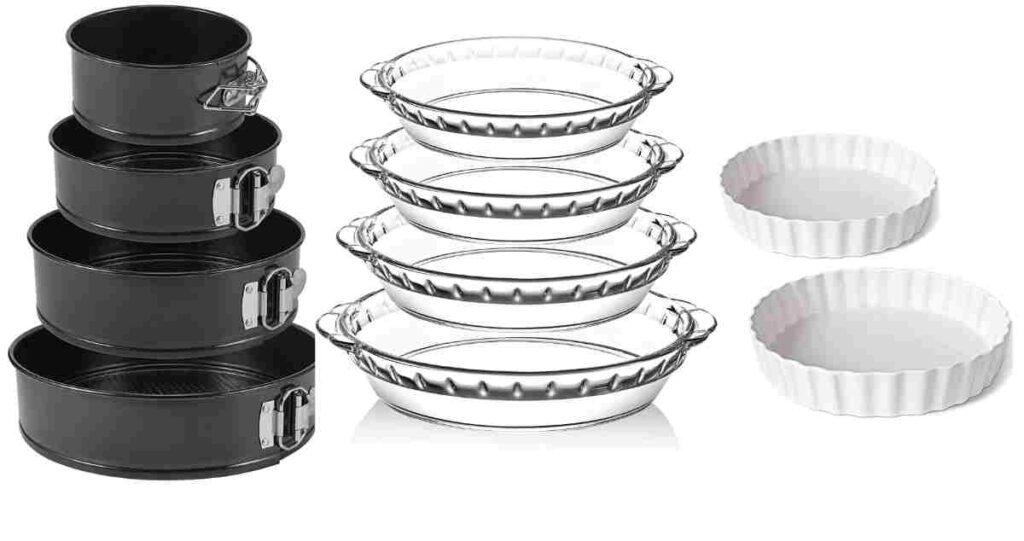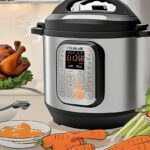When it comes to baking, the significance of the right tools can’t be overstated, and the humble tart pan holds a place of pride in any baker’s arsenal. However, not everyone can access a tart pan, or maybe you’re baking and realize you can’t find yours. Maybe it’s your first time trying a tart recipe, and you’re not yet ready to invest in specific bakeware.
Whatever your situation, don’t let the lack of a tart pan keep you from creating a delightful dessert. Through the creative use of common kitchen items, you can effectively substitute a tart pan and still turn out an equally impressive and delectable tart. Read on to find out how!
Tart Pans:
The path to perfect tarts starts with understanding the fundamental role of a tart pan. A tart pan, also known as a fluted tart pan or a quiche pan, is a special kind of baking equipment specifically designed to bake tarts and quiches.
Unlike the typical cake or pie pan, a tart pan has a flat bottom and straight sides that are often fluted or scalloped.
The pan’s design helps achieve the tarts’ iconic aesthetic – a crisp and flaky crust, well-defined edges, and a perfectly flat base to hold the filling. Most tart pans have a removable bottom which aids in the smooth release of the finished tart without damaging the delicate crust.
The materials of tart pans also play a crucial role in baking. Most tart pans are made of metal – commonly aluminum or steel – that conducts heat well and allows the tart crust to bake evenly, ensuring a delightful crunch in every bite. The dark-colored exterior of many tart pans also promotes even crust browning.
Many tart pans are available in the market, ranging from mini, individual serving-size pans to larger ones for sharing. Some even come in different shapes, such as rectangular or heart-shaped, adding to the charm and appeal of your baked goods.
A tart pan plays an essential role in achieving the perfect tart. It’s more than just a baking tool; it’s a cornerstone of tart-making. However, the absence of a tart pan shouldn’t prevent you from baking. You can use several effective alternatives, and we’ll guide you through them in the next sections.
Reasons for Tart Pan Substitutions
The reasons for seeking a tart pan substitute are as varied as the bakers. For novice bakers, starting with a limited set of baking equipment is common.
As such, investing in a specialized tool like a tart pan might not be at the top, especially if baking tarts is an occasional activity. Even for the seasoned baker, tart pans can sometimes be less of a priority than other versatile baking tools.
On the other hand, sudden baking urges can strike, leading to the realization that a tart pan is nowhere to be found or has been lent out. Or maybe it’s just one of those days where the tart pan is already in use, and you’re looking to bake multiple items simultaneously.
Sometimes, it’s simply a matter of storage. Not everyone has ample kitchen storage to accommodate every specialized piece of bakeware. Others might be embracing a minimalist kitchen approach, aiming to work with as few baking equipment pieces as possible while maximizing their use.
Tart Pan Substitutes and How to Use Them:
- Springform Pan: This pan is often used for cheesecakes but can also be used as a tart pan substitute. It has removable sides that can help achieve the same effect as a tart pan.
- Pie Dish: While a pie dish may have sloping sides compared to the straight sides of a tart pan, it can serve as a good substitute, especially for fruit tarts.
- Muffin Tin: Mini muffin tins can be used to make mini tarts. This is a great option if you want to create individual servings.
- Cake Pan: If you don’t need the fluted edges or the removable bottom of a tart pan, a cake pan can be a suitable substitute. You can also line the bottom with parchment paper for easier removal.
- Quiche Pan: A quiche pan is very similar to a tart pan, with a removable bottom and fluted edges.
- Cookie Sheet: For free-form tarts, also known as galettes, a flat cookie sheet works perfectly.
- Loaf Pan: This can work for a rectangular tart. Just make sure to line it with parchment paper for easy removal.
- Baking Dish: A square or rectangular baking dish can be used as a substitute. This is also best used with a parchment lining.
- Silicone Pan: These pans are flexible, making it easier to remove the tart once it’s baked.
- Cupcake Pan: Similar to a muffin tin, a cupcake pan can be used to create individual tartlets
While these substitutes may not perfectly replicate a tart pan, they can deliver delicious and aesthetically pleasing tarts. Baking is all about innovation and improvisation, so don’t be afraid to try something new.
Tips and Tricks for Successful Tart Pan Substitution:
Once you’ve selected your tart pan substitute, there are a few extra tips and tricks to ensure your baking success.
- Adjust baking times and temperatures: It’s important to keep a close eye on your tart, especially when using a substitute. Different materials conduct heat differently, and the size and shape of your substitute pan can affect how quickly your tart bakes. Start checking for doneness a bit earlier than your recipe suggests to be safe.
- Preserve the aesthetic: While your substitute pan may not have the fluted edges of a tart pan, you can still create a beautiful tart. For instance, with a muffin tin, you can create a fluted edge with your fingers. Or, with a pie pan, take extra time to crimp the edges of your tart for a decorative touch.
- Easy tart removal: One of the biggest challenges when using a tart pan substitute is removing the tart once it’s baked. Parchment paper or a generous coating of butter can aid in the process. Also, allow your tart to cool completely before attempting to remove it, as it will firm up and be less likely to break.
- Even cooking: If you’re using a pan with higher sides, like a springform pan, ensure the crust is not overly thick at the bottom or thin at the sides. This will ensure the tart cooks evenly and maintains a good crust-to-filling balance.
Remember, the key to successful tart pan substitution is adaptability. Don’t be afraid to make small adjustments or to think creatively to solve new baking challenges. If you keep these tips in mind, you’ll be well on your way to baking delicious tarts, no tart pan required!
 Conclusion:
Conclusion:
In baking, as in life, sometimes unexpected detours lead to the most delightful discoveries. While a tart pan may be the traditional tool for creating tarts, it’s not the only option
Each alternative offers unique charm and functionality, from pie pans to muffin tins and springform pans to baking sheets. But remember, it’s not just about the pan; it’s about the baker’s creativity, adaptability, and spirit of experimentation that makes each tart a masterpiece.
So, don’t hesitate to explore these tart pan substitutes and create your mouthwatering tarts, and you might just find that your kitchen is more versatile than you ever imagined.
- What size pan is one and a half (1.5) quarts? - June 8, 2023
- Le Creuset saucepan sizes: Choosing the Perfect Pan - June 8, 2023
- Blue diamond pan instructions: Step-by-Step Guide - June 8, 2023






